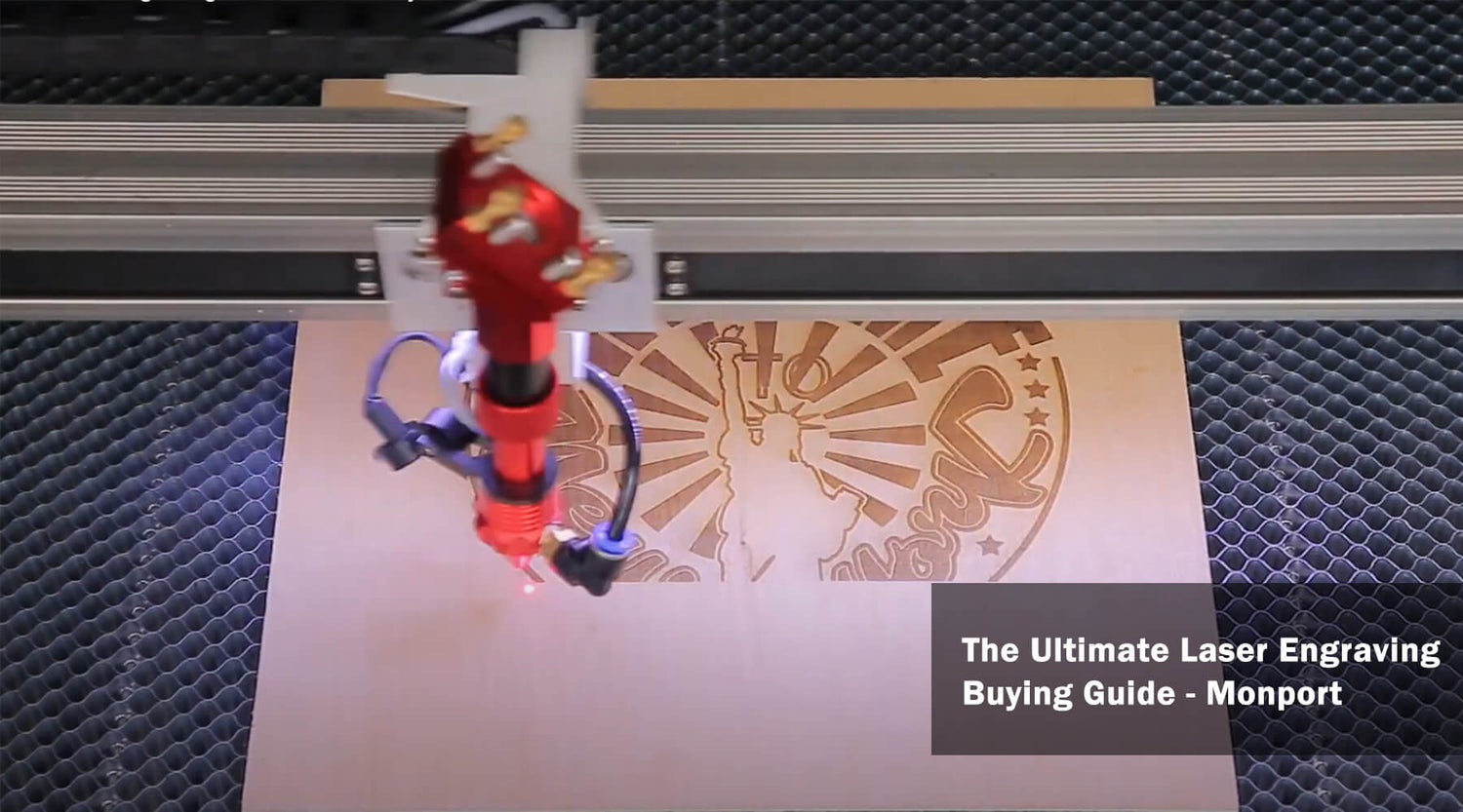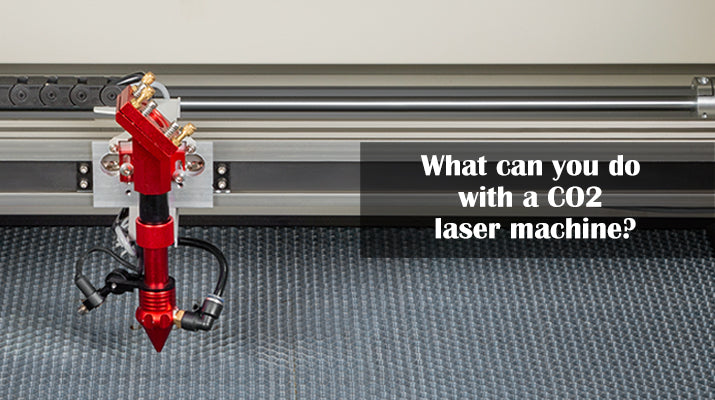One of the most well-liked and sought-after techniques in the laser cutting industry is laser wood engraving. At Monport, we are aware that mastering the use of a laser wood engraver is a fundamental skill for both amateur and expert wood engravers. To help you learn how to engrave wood beautifully, we totally committed to offering you our professional knowledge and guidance. Do you run a small company? Are you an amateur laser engraver? Or perhaps you've only recently begun laser wood engraving yourself.
We offer a user-friendly guide to address all of your inquiries regarding laser engraving wood and other applications for each chapter in your laser engraving adventure. With our laser wood engraver devices, let your imagination go wild with the limitless possibilities for laser engraving wood.
What is the best wood for laser engraver?

There are several types of wood that work well with laser engravers. Some good options include:
Basswood: This type of wood is soft and easy to work with, making it a good choice for laser engraving. It has a smooth surface and a light color, which makes the engraving stand out well.
Bamboo: Bamboo is a durable and sustainable wood that is also good for laser engraving. It has a consistent grain pattern, which makes it easy to engrave accurately.
Cherry: Cherry wood has a reddish color and a fine, straight grain, which makes it a good choice for laser engraving. It is a relatively hard wood, so it may be more difficult to work with than some of the other options on this list.
Maple: Maple is a hard and dense wood that is good for laser engraving. It has a smooth surface and a consistent grain pattern, which makes it easy to engrave accurately.
Walnut: Walnut is a hard wood with a rich, dark color. It is good for laser engraving and has a smooth surface that is easy to work with.
It's important to keep in mind that the best wood for laser engraving will depend on your specific needs and preferences. Some other factors to consider when selecting wood for laser engraving include the thickness and density of the wood, as well as the type of project you are working on.
The Best Settings for Various Woods Laser Engraving
It is important to note that the optimal speed and power settings for laser engraving wood will depend on a number of factors, including the type of wood you are using, the thickness of the wood, and the desired depth of the engraving.
Here are some specific recommendations for laser engraving various types of wood with a Monport 80W laser engraver:
- Basswood
Engraving: A speed of 150 mm/s and a power of 15% is a good starting point for laser engraving basswood.
Cutting: A speed of 100 mm/s and a power of 40% is a good starting point for cutting basswood with the Monport 80W laser engraver.
- Bamboo
Engraving: A speed of 100 mm/s and a power of 15% is typically sufficient for laser engraving bamboo.
Cutting: A speed of 70 mm/s and a power of 50% is a good starting point for cutting bamboo with the Monport 80W laser engraver.
- Cherry
Engraving: A speed of 100 mm/s and a power of 20% is generally a good starting point for laser engraving cherry wood.
Cutting: A speed of 80 mm/s and a power of 60% is a good starting point for cutting cherry wood with the Monport 80W laser engraver.
- Maple
Engraving: A speed of 100 mm/s and a power of 30% is often effective for laser engraving maple wood.
Cutting: A speed of 90 mm/s and a power of 70% is a good starting point for cutting maple wood with the Monport 80W laser engraver.
- Walnut
Engraving: A speed of 100 mm/s and a power of 30% is usually sufficient for laser engraving walnut wood.
Cutting: A speed of 90 mm/s and a power of 70% is a good starting point for cutting walnut wood with the Monport 80W laser engraver.
Keep in mind that these are just general guidelines and the optimal speed and power settings may vary depending on the specific wood and the desired depth of the engraving. It is important to experiment with different settings and make adjustments as needed to achieve the best results.
Wood Laser Engraving Projects
There are many types of wood laser engraving projects that you can try. Here are a few ideas to get you started:
Customized wood signs: Create a custom wood sign with your company's logo, a favorite quote, or a personalized message.
Wood puzzles: Laser engrave a design onto a piece of wood and cut it out using the laser engraver to create a unique puzzle.
Wood ornaments: Laser engrave a design onto a piece of wood and add a ribbon or string to hang it as an ornament on a tree or in a window.
Wood jewelry: Laser engrave a design onto a piece of wood and add a jump ring or bail to create a unique piece of jewelry.
Wood coasters: Laser engrave a design onto a piece of wood and use it as a coaster to protect your furniture.
Wood business cards: Create a unique and memorable business card by laser engraving your contact information onto a piece of wood.
Wood clocks: Laser engrave a design onto a piece of wood and add clock hands and a battery-powered movement to create a custom wood clock.
Wood magnets: Laser engrave a design onto a piece of wood and add a magnet to the back to create a unique refrigerator magnet.
There are many other possibilities for wood laser engraving projects. The best project for you will depend on your interests, skills, and available resources.
Some Important Parameters When Laser Engraving Wood
There are several other important parameters to consider when laser engraving wood:
Laser power: The power of the laser is an important factor to consider when laser engraving wood. A higher power laser will be able to create deeper and more detailed engravings, but it may also be more likely to cause damage to the wood or the laser engraver.
Laser focus: The focus of the laser beam is also an important factor to consider when laser engraving wood. A properly focused laser beam will result in a more precise and accurate engraving, while a poorly focused laser beam may produce a blurry or uneven engraving.
Engraving speed: The speed at which the laser moves over the surface of the wood can also affect the quality of the engraving. A slower engraving speed will result in a deeper and more detailed engraving, but it may also take longer to complete.
Wood thickness: The thickness of the wood can also impact the laser engraving process. Thicker wood may require a higher power laser and a longer engraving time to achieve the desired depth of the engraving.
Wood grain: The grain of the wood can also affect the laser engraving process. Wood with a consistent grain pattern will be easier to engrave accurately, while wood with a more irregular grain pattern may be more difficult to work with.
Wood density: The density of the wood can also impact the laser engraving process. Harder and denser woods may require a higher power laser and a longer engraving time to achieve the desired depth of the engraving.
It is important to carefully consider these and other parameters when laser engraving wood to ensure the best possible results.
Smoke Extraction When Cutting and Engraving Wood
It is generally recommended to use a smoke extraction system when laser cutting and engraving wood to help remove smoke and debris from the work area. Laser cutting and engraving wood generates a significant amount of smoke and debris, which can be harmful to breathe in and can also contaminate the work area. A smoke extraction system can help to improve the air quality in the work area and reduce the risk of respiratory issues or other health problems.
There are several types of smoke extraction systems available for laser cutting and engraving, including stand-alone units and systems that are integrated into the laser cutter itself. These systems typically use a combination of filters and fans to capture and remove smoke and debris from the work area.
In addition to improving the air quality in the work area, a smoke extraction system can also help to extend the life of the laser cutter by removing contaminants that can build up on the optics and other components of the machine.
Overall, it is generally recommended to use a smoke extraction system when laser cutting and engraving wood to help ensure a safe and healthy work environment and to protect the laser cutter from damage.
Transfer Tape for Wood Laser Engraving to prevent burn marks
Transfer tape, also known as transfer paper or masking tape, can be used to prevent burn marks when laser engraving wood. Transfer tape is a thin, transparent tape that is used to cover areas of the wood that should not be engraved. When the laser engraver is used, it will cut through the tape but not the wood, resulting in a precise and accurate engraving.
Using transfer tape can be especially useful when laser engraving wood with intricate or detailed designs, as it can help to ensure that the laser only etches the desired areas of the wood. It can also be used to protect the wood from heat and smoke damage during the engraving process.
To use transfer tape for laser engraving wood, simply apply the tape to the wood in the desired pattern, making sure to smooth out any bubbles or creases. Then, set the laser engraver to the appropriate settings and engrave the wood as desired. When the engraving is complete, simply remove the tape to reveal the finished engraving.
While transfer tape can be useful for preventing burn marks when laser engraving wood, it is not always necessary. In some cases, it may be possible to achieve good results without using transfer tape by carefully adjusting the laser engraver settings and using a lower power laser.
Frequently Asked Questions (FAQ) about Laser Cutting Wood
1. What type of wood is best for laser cutting?
Soft woods like basswood and bamboo are ideal for laser cutting wood because they cut cleanly with less power. Hardwoods such as walnut or maple may require stronger laser power but deliver beautiful results.
2. Can I both cut and engrave wood with a laser?
Yes, laser cutting wood and engraving can be done on the same project. Engraving creates detailed designs on the surface, while cutting defines the shape or outline.
3. What settings should I use for laser cutting wood?
Settings depend on wood type and thickness. Start with low power and speed for thin materials and increase gradually for thicker woods to prevent burns or charring.
4. How do I prevent burn marks when laser cutting wood?
Use transfer tape or masking tape to protect the surface, adjust focus carefully, and maintain clean optics for a crisp laser cutting wood finish.
5. What safety equipment is needed for laser cutting wood?
Always use a smoke extraction or air filtration system to remove fumes and debris. It keeps both the workspace clean and your laser cutting wood machine in top condition.
Conclusion
On our website, you can easily find the Monport community, where many sculptors share their work. More wood engraving ideas are available. You can consult our technicians if you are having trouble engraving wood or other unusual materials, or if you are having material testing issues.
Get your Monport Canada laser engraver discount—enter code MPideas10 at checkout or tap the code at the top of the page.





